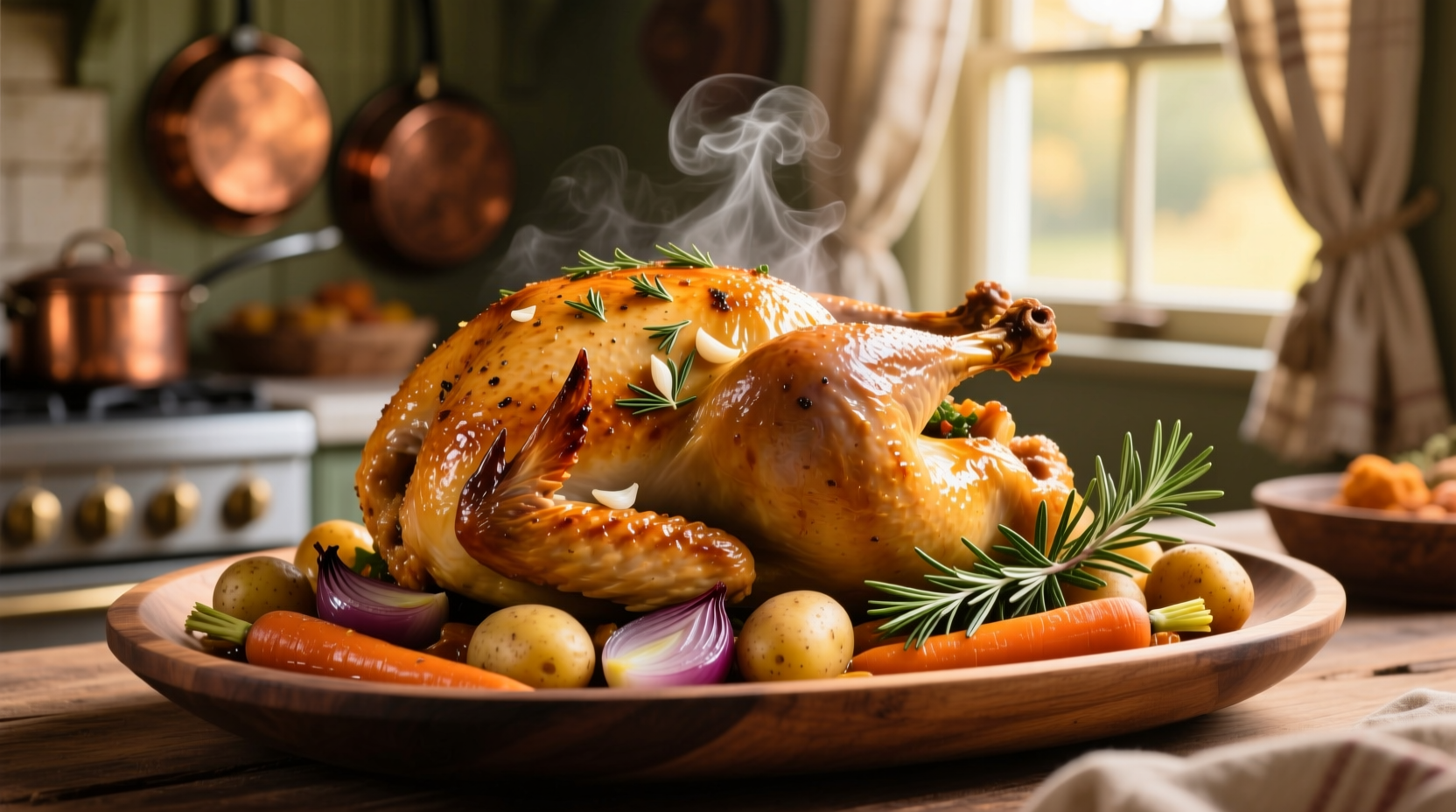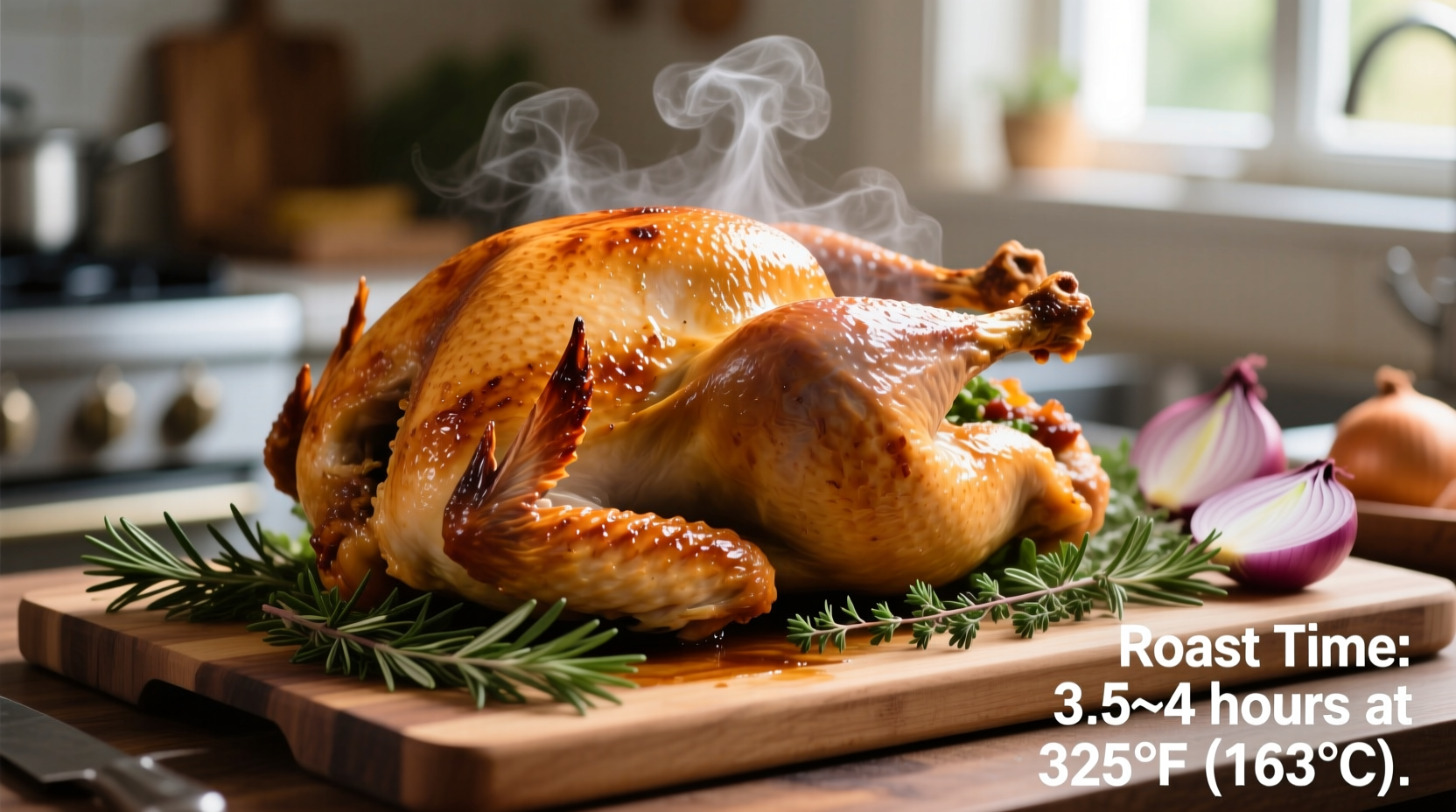The Complete Guide to Perfectly Roasting an 11-Pound Turkey
Nothing says holiday celebration quite like a golden-brown roasted turkey centerpiece. But getting that perfect bird—moist, flavorful, and safely cooked—requires precise timing and technique. For an 11-pound turkey, the clock starts ticking the moment you place it in the oven, but understanding why that timing matters is just as important as the numbers themselves.
Why Cooking Time Varies: The Science Behind Perfect Roasting
While 3 to 3½ hours is the standard guideline for an unstuffed 11 lb turkey at 325°F, several factors influence actual cooking time:
- Oven accuracy - Many home ovens run 25°F hotter or cooler than set
- Starting temperature - A turkey straight from the refrigerator takes longer than one brought to room temperature
- Stuffing - A stuffed bird requires approximately 30 minutes longer cooking time
- Rack position - Middle rack provides most even heat distribution
- Convection vs conventional - Convection ovens reduce cooking time by 25%
The USDA Food Safety and Inspection Service emphasizes that internal temperature is the only reliable indicator of doneness. Color alone cannot confirm safety—undercooked turkey can harbor harmful bacteria like Salmonella and Campylobacter.
Step-by-Step Roasting Process for Your 11 lb Turkey
Preparation Phase (30 Minutes Before Roasting)
Proper preparation sets the stage for even cooking:
- Remove turkey from refrigerator 1 hour before roasting to reduce thermal shock
- Thoroughly pat skin dry with paper towels—moisture prevents crispiness
- Season generously with salt (1 tsp per 5 lbs) and your preferred herbs
- Optional: Loosen skin and rub seasoning directly on meat for deeper flavor
- Place on rack in roasting pan with 1 cup of broth or water in bottom
Roasting Timeline for 11 lb Turkey
| Time Elapsed | Action Required | Target Temperature |
|---|---|---|
| 0 minutes | Place turkey in preheated 325°F oven, breast-side up | 40°F (starting) |
| 90 minutes | Baste with pan juices; rotate pan 180° for even browning | 120-130°F |
| 2 hours | Check breast temperature; tent wings with foil if browning too fast | 140°F |
| 2½ hours | Begin checking internal temperature every 15 minutes | 150°F |
| 3-3½ hours | Verify final temperatures; remove when reached | 165°F (breast), 175°F (thigh) |
Critical Temperature Checkpoints
Insert your meat thermometer into these specific locations:
- Breast: Center of the thickest part, avoiding bone
- Thigh: Where thigh meets body, without touching bone
- Stuffing (if used): Center must reach 165°F
According to the Centers for Disease Control and Prevention, nearly 1 million people get sick from foodborne illnesses each year during holiday celebrations. Proper temperature monitoring prevents these avoidable illnesses.
Troubleshooting Common Turkey Problems
Dry Breast Meat
If your turkey breast consistently dries out before the thighs cook through:
- Try spatchcocking (removing backbone and flattening) for more even cooking
- Place ice packs on breast for 15 minutes before roasting to create temperature differential
- Apply butter under skin to create moisture barrier
Undercooked Thighs
When thighs haven't reached 175°F but breast is done:
- Cover breast with foil and continue roasting
- Place turkey back in 350°F oven for 15-20 minute intervals
- Use an instant-read thermometer for precise monitoring
The Essential Resting Period
Never skip the resting phase! After removing your 11 lb turkey from the oven:
- Let it rest 20-30 minutes before carving
- Cover loosely with foil to retain heat without steaming skin
- Internal temperature will continue rising 5-10°F during this time (carryover cooking)
- Juices redistribute throughout the meat for maximum tenderness
Professional chefs at the Culinary Institute of America note that skipping this step causes up to 30% more juice loss when carving. That precious resting time transforms a potentially dry bird into succulent perfection.

Advanced Techniques for Next-Level Results
Dry Brining Method
For superior flavor and texture:
- Rub 1 tablespoon kosher salt per 5 pounds of turkey under skin and on surface
- Refrigerate uncovered for 24-48 hours before roasting
- No need to rinse before cooking—pat dry and proceed
This method seasons the meat deeply while improving moisture retention. The American Chemical Society confirms that salt breaks down muscle proteins, allowing them to retain more water during cooking.
Convection Oven Adjustments
When using convection (fan-assisted) ovens:
- Reduce temperature by 25°F (cook at 300°F instead of 325°F)
- Expect cooking time to decrease by 25% (approximately 2¼-2½ hours)
- Rotate pan halfway through for even browning
Food Safety Essentials You Must Know
The USDA's Food Safety and Inspection Service provides these critical guidelines:
- Never thaw turkey at room temperature—use refrigerator, cold water, or microwave methods
- Keep turkey below 40°F until ready to cook
- Wash hands and surfaces thoroughly after handling raw poultry
- Discard stuffing left in turkey for more than 2 hours at room temperature
- Refrigerate leftovers within 2 hours of cooking
Remember: The "danger zone" for bacterial growth is between 40°F and 140°F. Minimize the time your turkey spends in this temperature range during preparation and serving.
Conclusion: Mastering Your 11 lb Turkey
Roasting an 11-pound turkey to perfection combines science, technique, and patience. While the standard 3 to 3½ hour guideline provides a starting point, your meat thermometer remains your most essential tool. By understanding how factors like oven accuracy, preparation methods, and resting time affect results, you'll consistently produce a moist, flavorful centerpiece that makes your holiday meal truly special. Remember—when it comes to food safety, temperature always trumps time.











 浙公网安备
33010002000092号
浙公网安备
33010002000092号 浙B2-20120091-4
浙B2-20120091-4